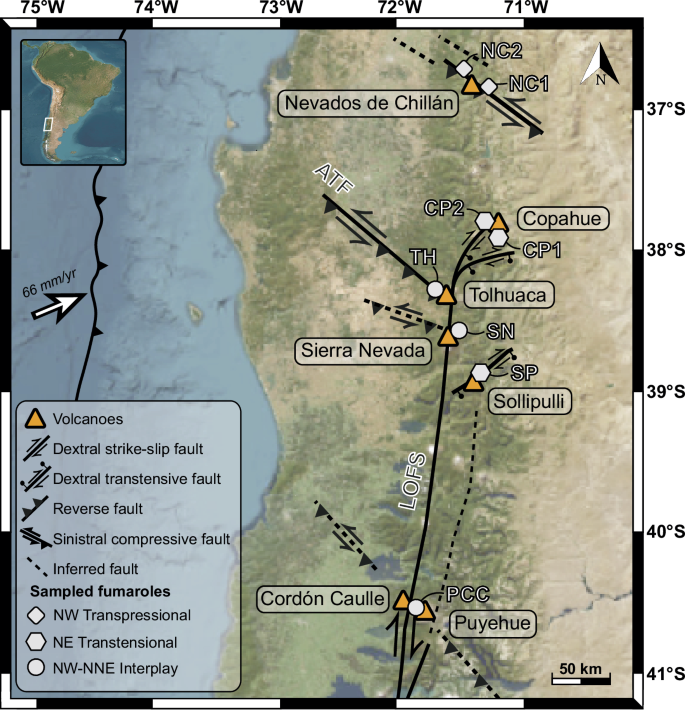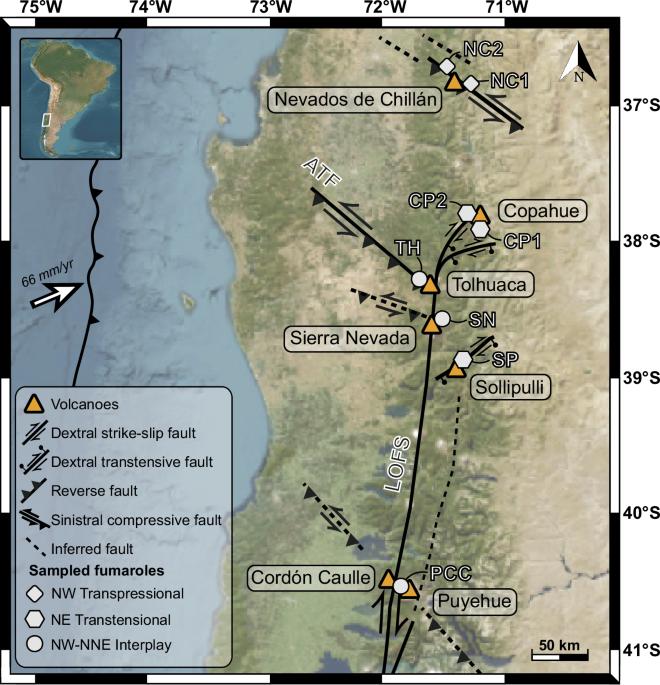The orientation of intra-arc crustal fault systems influences the copper budget of magmatic-hydrothermal fluids
IF 8.1
1区 地球科学
Q1 ENVIRONMENTAL SCIENCES
引用次数: 0
Abstract
Some of the largest magmatic-hydrothermal copper ore deposits and deposit clusters are associated with arc-oblique fault systems. Whether this structural context impacts the geochemistry of hydrothermal fluids, including their copper contents, remains unknown. Here, we investigate the copper concentration and helium isotope signature of geothermal fluids as modern analogs of hydrothermal ore deposits in the Andes of central-southern Chile. We show that fault systems broadly parallel to the regional stress field facilitate the early release of fluids from deep primitive magmas. By contrast, fault systems oblique to the regional stress field prevent the early escape of fluids and promote magmatic enrichment in copper, volatiles, and ligands, enhancing the potential to form copper deposits. We conclude that the orientation of fault systems actively influences the copper budget of ascending hydrothermal fluids, explaining the contrasting distribution of metals along distinct structures often observed in porphyry-epithermal systems and other types of magmatic-hydrothermal deposits. The enrichment of copper in magmatic hydrothermal fluids is influenced by the orientation of fault systems in arcs, according to geochemical analyses of gases and hot spring waters from active fumarole fields in the Southern Volcanic Zone of Chile.


弧内地壳断层系统的走向影响岩浆-热液的铜预算
一些最大的岩浆热液铜矿床和矿床群与弧斜断层系统有关。这种构造背景是否会影响热液的地球化学,包括其铜含量,目前仍不得而知。在这里,我们研究了作为智利中南部安第斯山脉热液矿床现代类似物的地热流体的铜浓度和氦同位素特征。我们发现,与区域应力场大致平行的断层系统有利于深部原始岩浆早期释放流体。相比之下,与区域应力场倾斜的断层系统会阻止流体的早期释放,促进岩浆中铜、挥发物和配位体的富集,提高形成铜矿床的潜力。我们的结论是,断层系统的走向会积极影响上升热液的铜储量,从而解释了斑岩-热液系统和其他类型的岩浆-热液矿床中经常观察到的金属沿不同结构的对比分布。根据对智利南部火山区活跃火口区的气体和温泉水进行的地球化学分析,岩浆热液中铜的富集受弧形断层系统走向的影响。
本文章由计算机程序翻译,如有差异,请以英文原文为准。
求助全文
约1分钟内获得全文
求助全文
来源期刊

Communications Earth & Environment
Earth and Planetary Sciences-General Earth and Planetary Sciences
CiteScore
8.60
自引率
2.50%
发文量
269
审稿时长
26 weeks
期刊介绍:
Communications Earth & Environment is an open access journal from Nature Portfolio publishing high-quality research, reviews and commentary in all areas of the Earth, environmental and planetary sciences. Research papers published by the journal represent significant advances that bring new insight to a specialized area in Earth science, planetary science or environmental science.
Communications Earth & Environment has a 2-year impact factor of 7.9 (2022 Journal Citation Reports®). Articles published in the journal in 2022 were downloaded 1,412,858 times. Median time from submission to the first editorial decision is 8 days.
 求助内容:
求助内容: 应助结果提醒方式:
应助结果提醒方式:


